“If the government of Assam thinks that nature conservation is important, it must clear the Deepor Beel, a Ramsar Site and one of the best wetland ecosystems, from encroachment. It is a crucial time for Earth and our ecology, and we must act sincerely to protect what nature has bestowed on us.”
Renowned wildlife filmmaker and environment crusader Mike Pandey made this observation raising concerns on the indifferent and selfish attitude of human beings towards conservation of nature. He was delivering the Dr. Robin Banerjee Memorial Lecture at Vivekananda Kendra Institute of Culture in Guwahati. “It's a shame to find Deepor Beel, a Ramsar site, turned into a dumping ground. It is time to wake up. I request the state government to take the initiative to clean it up,” Pandey said. It is to be noted that apart from rich biodiversity and ecosystem, the water body maintains the water level of the Guwahati city. During monsoon it works as a reservoir to excess water.
The three-time Green Oscar winner was in Guwahati to deliver the annual Dr Robin Banerjee Memorial Lecture — organised on the occasion of the birth anniversary of the great conservationist Padmashree Robin Banerjee. Kaziranga Wildlife Society has been celebrating 12th August, the birth day of Dr. Banerjee, as Nature Conservation Day as a mark of respect to his contribution to nature and wildlife conservation. Dr Banerjee, a physician by profession was an avid photographer, painter and had 28 documentaries on nature to his credit. He was also the founder president of Kaziranga Wildlife Society, the oldest nature organization in the Northeast founded in 1969.
Pandey paid tribute to Banerjee by expressing deep respect to his vision and tireless work. Banerjee began his journey as a nature photographer when he was appointed the chief medical officer in Upper Assam. His film The Messenger from Kaziranga was the result of his adventures inside Kaziranga with a camera for six years. It was telecast in Berlin TV in 1961 which helped the sanctuary become one of the world’s favourite tourist destinations.
Besides Deepor Beel, Pandey urged the state government to deploy more forest guards to protect rhinos in Kaziranga National Park. The unabated poaching of rhinos in the Kaziranga National Park has compounded his disappointment. He gave a wake-up call to the state to do the needful and save the wetlands and the rhinos before it's too late. Pandey also expressed serious concern over the rise of man animal conflict in Assam. At least 600 such cases were reported since the beginning of 2013.
Pandey is renowned for his pioneering and landmark conservation works and has been globally honoured. He is India’s iconic wildlife conservationist, environmentalist and filmmaker. His outstanding efforts led to legislation to protect the whale shark not only in India (under Wildlife Act 1972) but also globally along with protection for other species over the years. His documentary Shores of Silence: Whale Sharks in India propelled the ban on the killing of whale sharks on Indian shores in 2000. In 1994, he became the first Asian producer/ director to win the Wildscreen Panda Award also known as the Green Oscar for his film 'The Last Migration — Wild Elephant Capture in Surguja'. Pandey has won over 300 awards across the globe for his work to spread awareness about biodiversity and conservation. Earth Matters-- his TV series on DD national network, reaches about 800 million people every week.
Pandey’s speech was short and informative that enlightened the students of city’s schools who participated in the event. They had a lively interaction session with the documentary maker after the screening of his three films — Shores of Silence: Whale Sharks in India, The Vanishing Giants and The Vanishing Vulture. Pandey’s film, The Vanishing Vulture, highlighted how over the years population of vulture, the “nature’s most efficient scavenger” in India, has gone down to a few thousands from a state that had the highest vulture population density in the world in the 1980s.
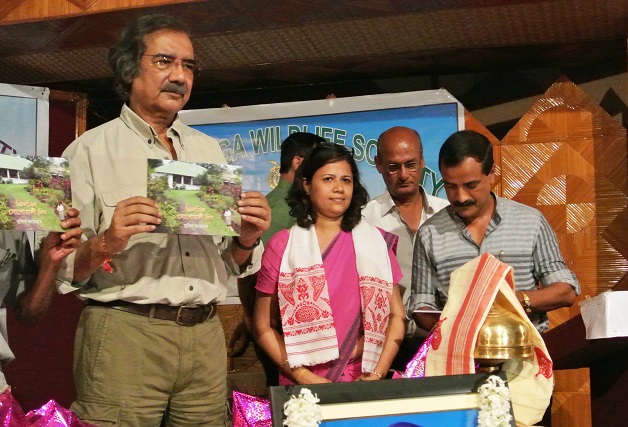
Two books were released on the occasion. A short biography on the life of Robin Banerjee, penned by Ramani Kanta Deka in Assamese was released by the KWS president Abani Baruah. ‘Jilmil Xonowali Din’—a children book on conservation, authored by writer-activist Mubina Akhtar in Assamese was inaugurated by Mike Pandey.
Photo: Prabal Kumar Das
- 161778 reads

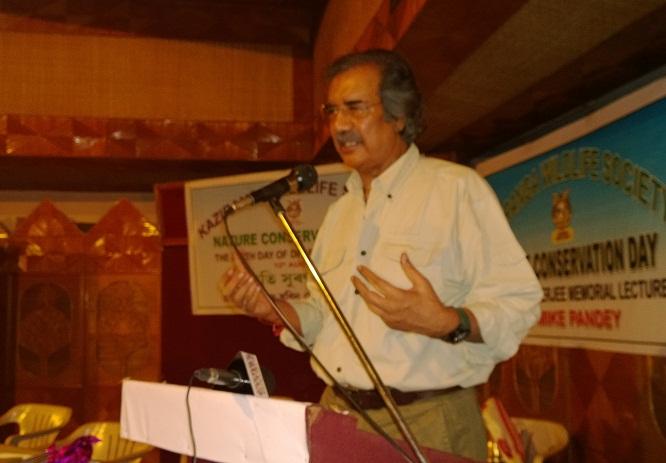
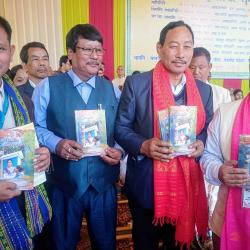


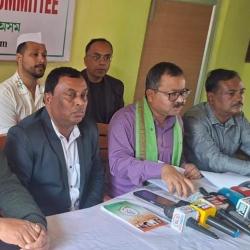
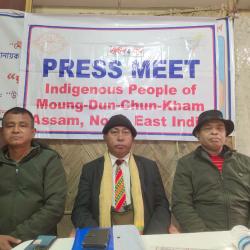



Add new comment